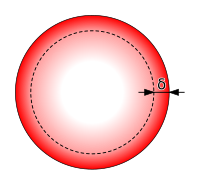
Photo from wikipedia
ABSTRACT Computing effective medium properties is very important when upscaling data measured at small scale. In the presence of stratigraphic layering, seismic velocities and anisotropy parameters are scale and frequency… Click to show full abstract
ABSTRACT Computing effective medium properties is very important when upscaling data measured at small scale. In the presence of stratigraphic layering, seismic velocities and anisotropy parameters are scale and frequency dependent. For a porous layer permeated by aligned fractures, wave‐induced fluid flow between pores and fractures can also cause significant dispersion in velocities and anisotropy parameters. In this study, we compare the dispersion of anisotropy parameters due to fracturing and layering at low frequencies. We consider a two‐layer model consisting of an elastic shale layer and an anelastic sand layer. Using Chapman's theory, we introduce anisotropy parameters dispersion due to fractures (meso‐scale) in the sand layer. This intrinsic dispersion is added to anisotropy parameters dispersion induced by layering (macro‐scale) at low frequencies. We derive the series coefficients that control the behaviour of anisotropy parameters at low frequencies. We investigate the influences of fracture length and fracture density on fracturing effect, layering effect and combined effect versus frequency and volume fraction of sand layer. Numerical modelling results indicate that the frequency dependence due to layering is not always the dominant effect of the effective properties of the medium. The intrinsic dispersion is not negligible compared with the layering effect while evaluating the frequency‐dependent properties of the layered medium.
Journal Title: Geophysical Prospecting
Year Published: 2019
Link to full text (if available)
Share on Social Media: Sign Up to like & get
recommendations!